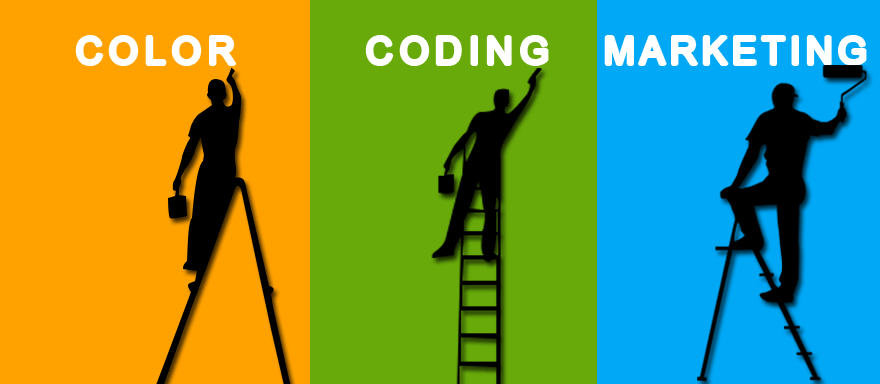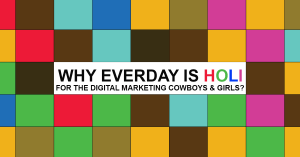As the nation gears up to play with colours on Holi, it is just another regular busy day for an online advertising professional, where he has yet again played with colours to create that desired impact for multiple brand communication.
Well, I don’t have to re-emphasise that digital marketing and selling through social media are the new mantras of business. It is here that colour becomes the strongest means of communication in a digital campaign and one of its most important element. Colour has an impact on how we think and behave. It directs our eye where to look, what to do, and how to interpret something. It puts content into context. It helps us decide what is important and what is not.
Colour is the new language in Marketing:
Human psychology urges a consumer to notice colours even before words as a single image delivers a lot of information in a very short time because we perceive an image all at once, whereas reading or hearing often takes significantly longer to process the same information. While colour is not the only important ingredient in your marketing, it is the first thing that hits people and it can leave a lasting impression. Thus choice of colours in advertisements and promotional campaigns can influence consumer feelings about products or services playing just as large a role as any slogan, conveying the attitudes and moods consumers would associate with.
Standing Out From the Noise:
Marketing experts define brand as the name, term, sign, symbol or design, or a combination of them intended to identify a company’s products or services. In other words, a brand communicates the IDEA of company or product. Human brains prefer recognizable brands, which makes colour incredibly important when creating a brand identity . Colours go on to reflect the personality of a brand carving its niche in the mind of a buyer.
Each brand is known by the identity of its characteristic colour. Whenever you say Coca Cola, the characteristic red colour comes to one’s mind or when you say the characteristic blue and red comes to your mind, even before your mind can reflect the letters of Pepsi in front of you eyes.
Attaining the Psychological Edge:
The psychological impact of colour is subjective. Social constructs and cultural perceptions have caused certain colours to broadly align with specific traits (like brown with ruggedness, purple with sophistication, and red with excitement). Women and feminity are generally associated with soft colours such as pink, while masculinity is associated with darker colours such as brown. Black is often associated to be the colour of power or authority, while white is often called the colour of purity.
Thus, one of the real challenges of digital marketing resides in choosing what colour suits the characteristics of your product’s personality and colours your competitors use, keeping in mind your target consumers and their social beliefs.
If you have a few more minutes to spare, see how we play with colours.



